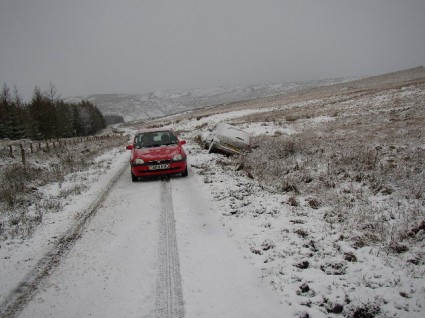 Britain’s roads are at a standstill with cars and lorries are still stuck in snow and ice. Hundreds of schools are closed, children are happily sledging and skating, and the shops are complaining that people are staying at home. Welcome to winter. People have been stuck in traffic jams for hours and some have even slept on trains because the tracks were iced up. Meanwhile, Canadian trains plunder their way through ten feet high piles of snow and the Russian transport system copes with the icy conditions that blast their way across the nation. But Britain has a peculiar problem – and it is not our attitude to winter. Rather it is our attitude to work.
Britain’s roads are at a standstill with cars and lorries are still stuck in snow and ice. Hundreds of schools are closed, children are happily sledging and skating, and the shops are complaining that people are staying at home. Welcome to winter. People have been stuck in traffic jams for hours and some have even slept on trains because the tracks were iced up. Meanwhile, Canadian trains plunder their way through ten feet high piles of snow and the Russian transport system copes with the icy conditions that blast their way across the nation. But Britain has a peculiar problem – and it is not our attitude to winter. Rather it is our attitude to work.
Here, everything simply has to be done 9 to 5. Whether it is work, distribution of goods, or schooling, it’s all 9 to 5. In other nations, there is much more flexibility with timings. In Germany, for instance, many schools start at 7.30am, finishing at 2pm – thereby avoiding the “office hours” rush. Similarly, in Japan, distribution of goods is often an overnight affair, avoiding daytime hold-ups due to trucks. Here, almost everything is done in the 9 to 5 framework, meaning that inevitably roads get clogged up. Add ice and snow to the mix and you are bound to have trouble.
This timing issue is prevalent online. One of the most popular questions about blogs or website content is “when is the best time to post?”. It is as though everyone wants to stick to some rigid timetable, imagining, rather like the British transport system, that there is a magic window for when to do something like blogging.
So, what are the fact? The facts are that most blogs are read in the morning, between 8am and 1pm. On Facebook, most blog posts or other web content is shared either before 9am or at the weekends. Meanwhile, most Tweets about blogs are done towards the end of the day, between 4pm and 6pm. Clearly, people are using Facebook before work, or afterwards – but especially at weekends (largely because it is banned by many companies). And they are using Twitter as a bit if light relief towards the end of a busy day.
When people see such data they go “Aha, so the best time to blog is first thing in the morning or late in the afternoon, or at weekends”. They see the information, put two and two together and come up with a calculated figure that if you blog at these times of the day you will get more recommendations, likes, Tweets and so on. Not necessarily.
The problem is, so many people see such timing information that the world is alive with blogs during those peak hours. In other words you are a mere car in the traffic jam of the Internet – you become LESS visible than the lone car on the empty road.
New data on the best time to blog comes from Dan Zorella. Look carefully at his graphs. They do not tell you the best time of day to blog, though they appear to. What they reveal is shown in his very last graph – that those blogs which get the most attention are those which publish articles SEVERAL TIMES A DAY. In other words, it is not about the best time of day to publish something, but rather publishing several different things at various times of the day.
When everyone publishes at those peak hours, it is rather like everyone in that 9 to 5 mentality of Britain; it clogs everything up. You get less attention, not more. Be flexible, publish at various times of the day and you will get more notice taken of you – especially if you publish lots.
Instead of asking “what is the best time of day to post?” ask instead “how can I increase the number of posts I make each day?”.
It is rather like the British transport ministers. Instead of asking “how can we deal with the traffic chaos on congested icy roads?” instead they should be asking “how can we change British attitudes so the roads are used constantly, rather than only in peaks?”. That would do more to solve the icy road problem, than a lorry load of grit.

1 thought on “Boost your website because of snow bound Britain”
Great post Graham!
Comments are closed.